by: Erica July 17th, 2018 comments:
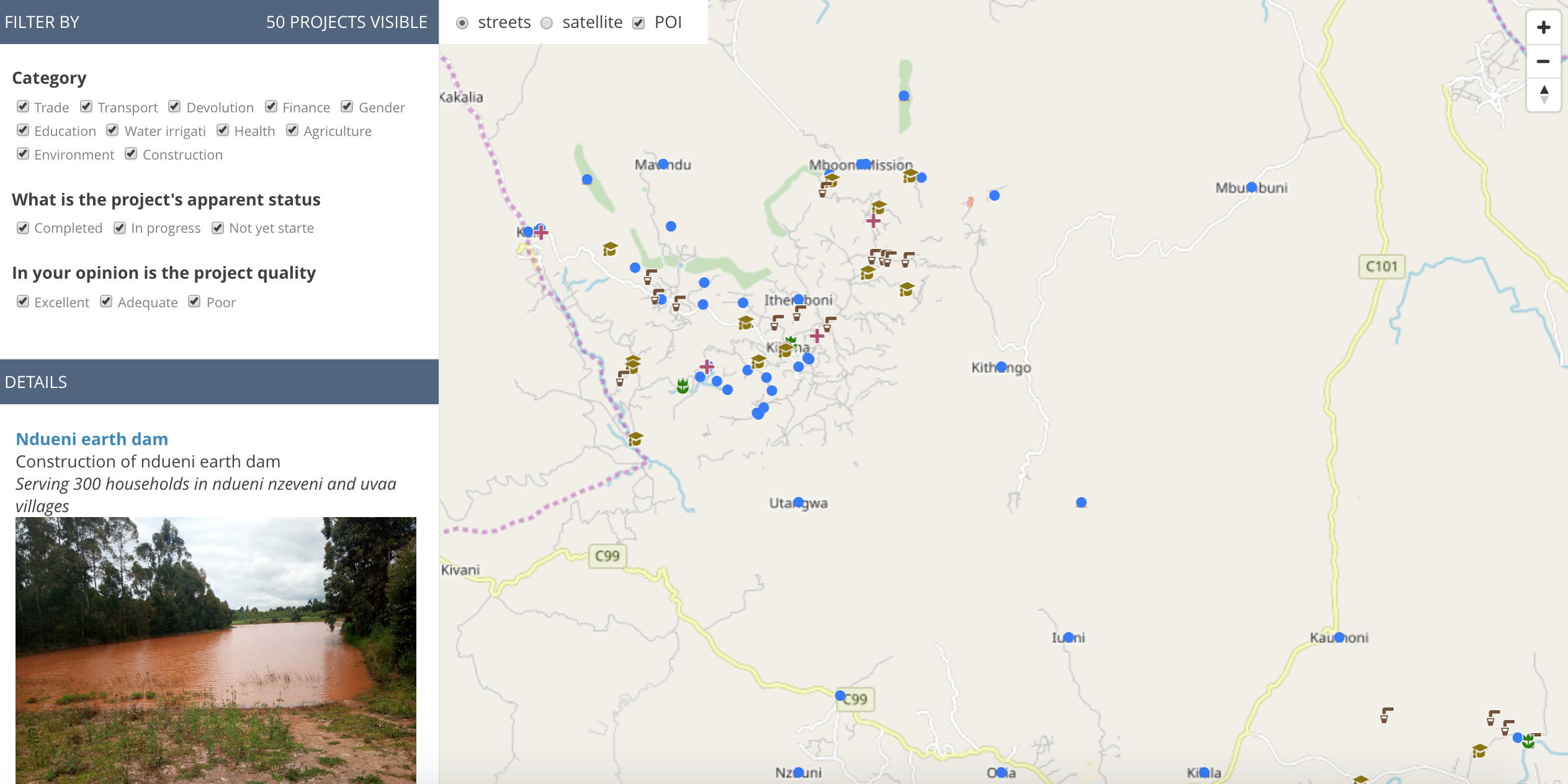
Kenya’s devolution process and constitutional reforms of 2010 means that Kenya’s counties, of which there are now 47, are directly responsible for a much greater amount of their local development. Some counties have integrated citizen participation in planning by embarking on an intensive annual participatory budgeting process, with support from the World Bank. But, in order to allow communities to directly plan and budget for development, counties realized that they needed better information about existing projects and features, best represented geographically. Many times, participatory budgeting (PB) groups were relying on memory or on hand-drawn paper maps of existing terrain and features in order to determine where they should place new water points, health centers, and other key new projects.
To help fill this gap, Map Kibera Trust, along with GroundTruth Initiative, have begun to work with two pilot counties, Makueni and Baringo, to create participatory digital maps with both citizen and county government mappers. Makueni has already been mapped in two pilot wards, including collecting feedback on county development project status and quality. Please see the maps here.
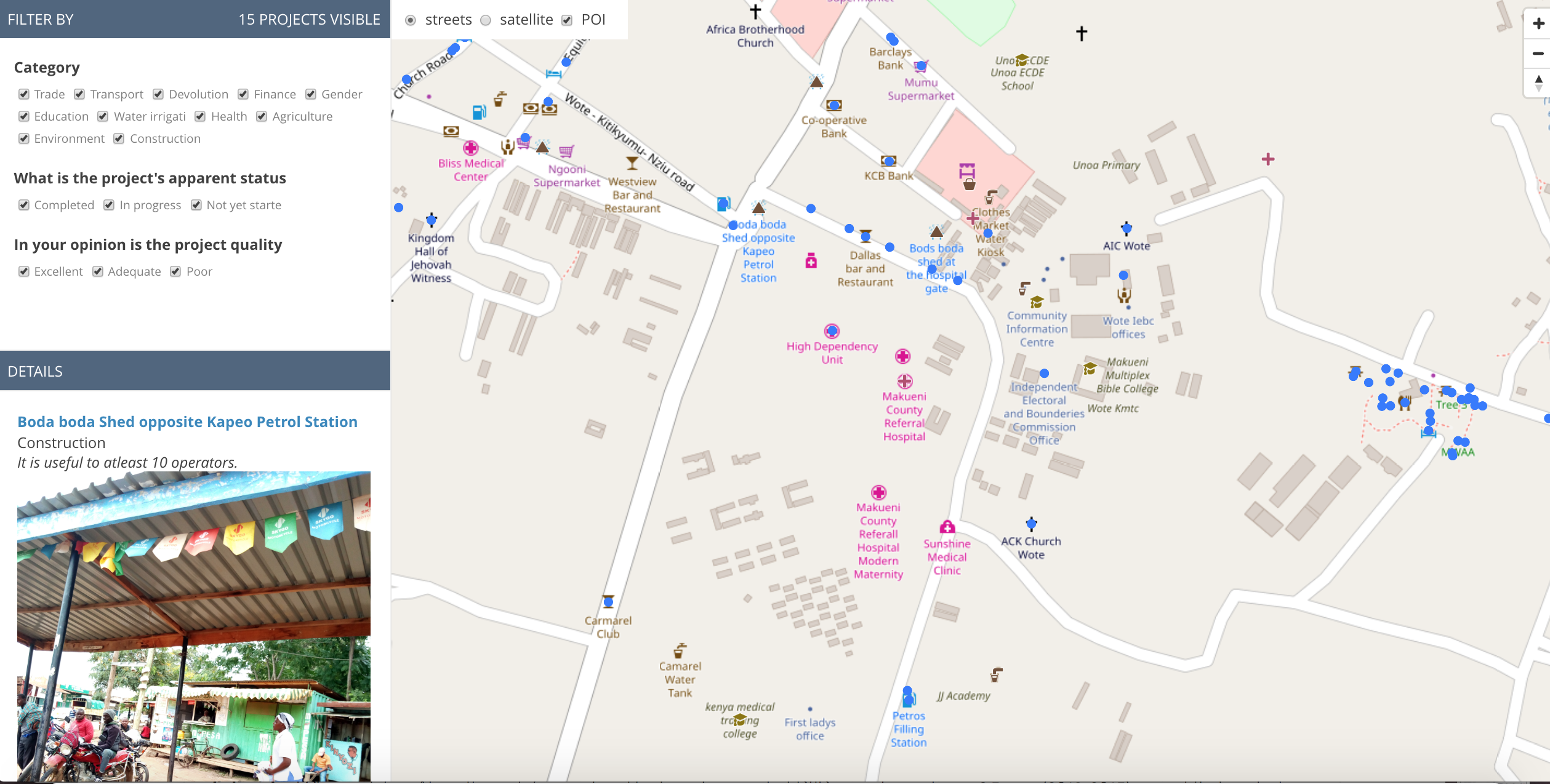
The base map data is, of course, gathered on OpenStreetMap – including various key features such as roads, shops, landmarks, schools, as well as the PB projects themselves. However, the mappers also collect project feedback information using Open Data Kit (ODK) and store it separately. The digital maps are then created using MapBox tools to combine them together. While mapping, participants mark whether the project is completed or not, whether it’s in good shape or poor, and add a sentence about the project’s quality or impact. We intend for this aspect to be updated regularly in preparation for the annual budgeting meetings, so that citizens can get a sense of how their intended projects are faring. Therefore, the map also allows those who take part in the budgeting process to see the extent to which the county is doing what they had intended. Each PB meeting will receive a printed map, so as not to have to rely on digital maps in locations with very little internet connectivity or even electricity.
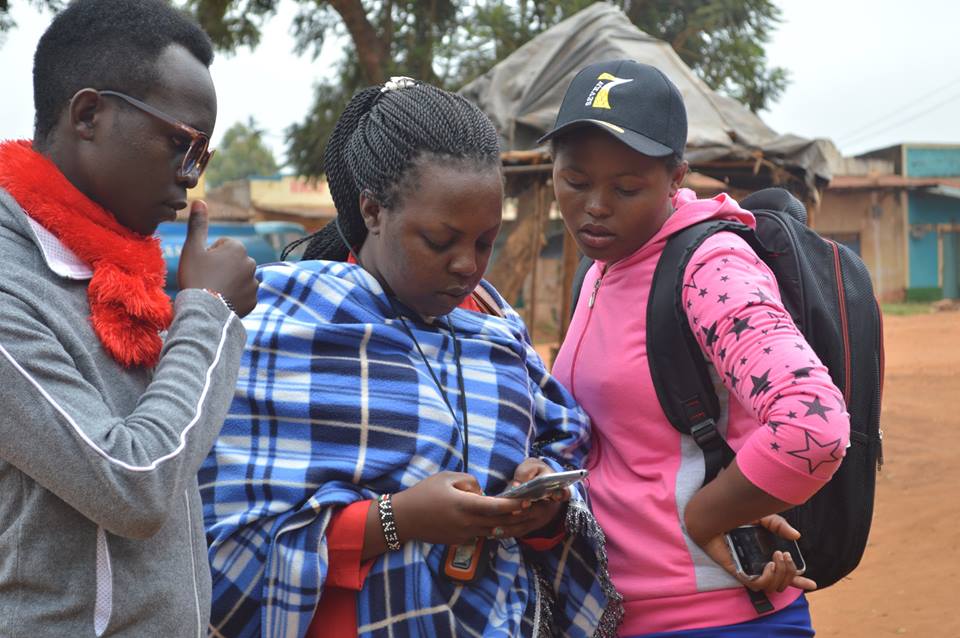
Mobile data collection using ODK in Mbooni ward, Makueni.
Check out this great video showing the mapping in Mbooni ward of Makueni county, also illustrating the challenges of working across rural terrain. By engaging young residents of each locale, we hope to spread participatory mapping throughout Kenya, county by county.
by: Sande Wycliffe December 3rd, 2012 Comments Off on Voice of Kibera takes awareness of its platform to Mashinani “Grassroots”
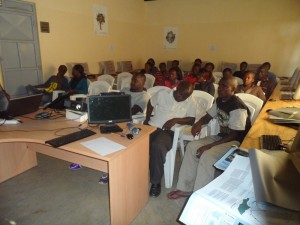
An Attentive Audience at the Meet-up
Introduction:
“I want to play a pivotal role in updating and sharing community generated information with the community and the world at large through citizen journalism. I say so because I witnessed an incident a few months ago during the oil shortage problem, where a CNN journalist came to Kibera slums and paid a woman stage manage some kind or a demonstration saying the price of Paraffin had gone up as he recorded her. I would like to know more about www.voiceofkibera.org so that I can challenge the perceptions and misrepresentations that Kibera goes through.†This was what Ann one of the participants had to say during the introductions session at the meet-up.
Before then, Map Kibera Trusts’ Voice of Kibera had organized a presentation in Soweto East village to engage the youth group leaders more on how they can get engaged with the platform. Having invited 30 representatives, 22 were able to turn up for the event that started at about 2:15pm on Saturday the 1st of December.Â
Preparations for the day:
Adequate arrangements by the V.O.K team were made to ensure that the days program would run smoothly hence achieving its purpose. Below was the program flow.
- Introduction of the entire Map Kibera Trust and Voice of Kibera.
- The relationship between Map Kibera Trust programs.
- The Voice of Kibera platform and how it works, what the participants think can be improved.
- Question and Answer time to enable a brain storming session for better understanding.
- Distribution of Maps on 3 themes; Education, Health and security to the line organizations that attended.
- Refreshment and Networking
- Conclusion
The voice of Kibera Presentation:
This was a step by step presentation done with Fredrick, one of the Map Kibera trust members. I could feel the mood in the hall, one with silence meaning the participants were keenly taking in what was being said. Some of the details that were shared are; How to submit a report, The ways with which you can send the report to the website, the details and importance of categories, editing, proof reading and approving or reports among others.
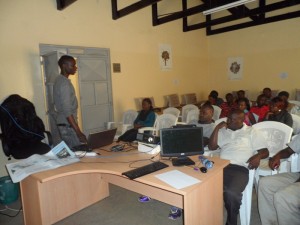
Fredrick Doing the Presentation in Soweto East
After the session Sande took over to reinforce what had been discussed even as he led the question and answer time.
Some of the questions:
- How do you ensure authenticity of the reports you collect?
- Now that we have new boundaries, what is your organization doing to that effect?
- Do you have anywhere you advertise jobs for the youths in the slums?
 Our Response to the Questions:
That when you have a report and you are not sure about its’ contends, you can get call back the person who send it to get more clarification, if the news has been covered by a 2nd or 3rd parties you can use that as well as using your available networks to get confirmation or more information on the same. Map Kibera is currently remapping the new boundaries by IEBC including information on the location of polling stations so that this information can be available to the locals before the elections in March 2013. We are developing a plartform under the name organizational directory that will see advertisement of opportunities a reality in the sense that those who consume contend do it for free apart from profiling organizations in Kibera on the Platform.
The meet-up that took close to 3 hours came to an end with the p
by: Kibera News Network May 3rd, 2012 comments:
Just the other day 24th April 2012, World Bank via Africa Gathering organized a serious forum for brainstorming session at Business Lounge, Junction Mall, Ngong Road Nairobi Kenya. The session was meant for the Kenyan youths to discuss high unemployment rate in Kenya and Africa at large, and I happened to have been in that meeting. Marieme Jamme who was sent by the World Bank to get Kenyan’s views concerning unemployment, started by wanting to know who amongst us were employed, unemployed, and self employed, it then emerged that a lot of people were self employed.                                                                                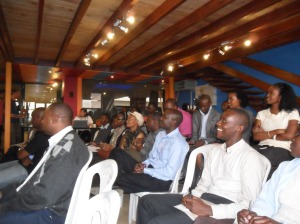
The meeting composed of different people selected randomly from different places. Are there jobs in Kenya ? Jamme asked, many people were like not sure but later poured answers like jobs are there but corruption, high qualifications and experiences, bad education system etc.
Jamme wanted to get a report, a report that she would take back to the World Bank, unlike all a long World Bank has been giving reports to Africans, this time they wanted a report from Africans to the World Bank. Â Â Â Â Â Â Â Â Â Â Â Â Â Â Â Â Â Â Â Â Â Â Â Â Â Â Â Â Â Â Â Â Â Â Â Â Â Â Â Â Â Â Â Â Â Â Â Â Â Â Â Â Â Â Â Â Â Â Â Â Â Â Â Â Â Â Â Â Â Â Â Â Â Â Â Â Â Â Â Â Â Â Â Â Â Â Â Â Â Â 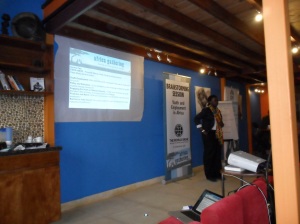
Looking at some of the things that can be done to end poverty in Kenya and other parts of Africa, farming was coming out strongly as one of the best things one can embark on, but not all people can be farmers, again Kenyan youths feels that farming is not a” sexy” job to do, the youths would prefer clean office jobs, a white Kenyan farmer was then given a chance to present her talk, according to her farming is the way to go, she showed us what she had done and what she had achieved with farming. But still it was had to convince a Kenyan youth to turn into farming.   
We were then asked to define who an ordinary Kenyan is, after different people gave different answers on this, it then dawned to us that most people in this meeting were well off and were running there own businesses. How many people here comes from the slums, one person asked, I was the only one from Kibera slum, this was a challenge to the organizers because many unemployed youths comes from the slums, then the whole attention turned on me, I became like the reference point and I represented many unemployed youths from Kibera.
I had a lot of questions to answer, then we were quickly divided into three groups to find a possible solution to the en rooting unemployment , from the the groups the most alarming issue was the bad education system that many suggested needs to be looked at a gain.
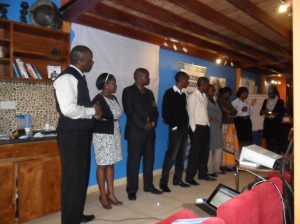
by Joshua Owino, Kibera News Network
Reposted from http://joshculture.wordpress.com/2012/05/








